

Insights
PCF 2024.04.17
4 Reasons to Use Primary Data Instead of Default Data in Your Product Carbon Footprint
Sustainable manufacturing and emission reporting are most useful when they use the best data. But getting accurate data often means investing in new data collection methods. Meanwhile, it’s simple to grab default data and plug it into your models and frameworks.
But does using default data while calculating your Product Carbon Footprint (PCF) mean you’re leaving money on the table? Is it worth getting the primary data directly from your own processes?
Until recently there wasn’t a clear benefit to using one type of data. Industry averages were commonly accepted placeholders, and there wasn’t an obvious penalty if they happened to be higher than your primary data. The enactment of the European Carbon Border Adjustment Mechanism changed all that.
Now using primary data instead of default data can have a real financial impact for manufacturers around the world.
What do default data and primary data mean when calculating your Product Carbon Footprint?
Default data
Default data means data pulled from verified data aggregators. They are often collections of industry average inputs and outputs. In the case of CBAM, the EU actually provides their own default data table that producers of CBAM goods (cement, iron and steel, aluminum, fertilizers, electricity, and hydrogen) must use.
There is no limit to using these default values until July 31, 2024 (i.e., unlimited default values can be used in the first three quarterly CBAM reports), after which they may be used for precursors of complex goods contributing up to 20% of the total.
Primary data
Primary data is simple. It’s the real data pulled directly from your locations. Some of this data includes electricity, water, and other inputs that can be measured by your utilities. Other data needs to come from your machines themselves.
Customers that use Glassdome’s Manufacturing Operations Management Software (MOMS) can use wireless gateways to get the information they need for their PCF while also optimizing their manufacturing processes.
Why should I use primary data instead of default data?
A strategic approach to primary data can help your company save money, become more efficient, and grow more sustainable. Once you establish your company’s baseline data, you can do all kinds of great things with it.
When you use primary data instead of default data, you:
1. Get rewarded for beating the industry average
Does any of your primary data fall below the industry average for that metric? You won’t know until you measure and verify it. If so, you can save money on every item you import to Europe by using real data instead of default data.
Is your primary data above the industry average? That’s fine, use default data for now (and then head down to item #2 on this list).
2. Improve efficiency
Primary data helps you identify inefficiencies in your production process. By improving your efficiency and reducing your carbon intensity, you can lower your product carbon footprint and CBAM costs every year. It’s a benefit that gets better and better.
3. Innovate your products
Primary data captured across the full lifecycle of your products helps you identify opportunities to innovate. You can develop and adopt more sustainable processes and materials, which can result in lower emissions and costs. Plus, those improvements will help your sales and marketing teams take advantage of the new, more sustainable products to find new channels and audiences.
4. Future-proof your business
Accurate, reliable primary data helps your business adapt to tightening of existing regulations, and respond to new regulations. When you know your business, you can quickly make the right decisions.
Accurate data also helps you benchmark against competitors. Establishing a PCF baseline backed by primary data is the first step in understanding your competitive landscape. When you can compare your real PCF to the industry average and your competitors, you have a strategic advantage. And you can avoid unpleasant surprises when it comes to competitor pricing, marketing, and compliance.
How can Glassdome help?
Glassdome makes sustainability simple. Because we’re born from manufacturing, we’re experts in getting real data from even the most complicated machines and processes. Our Product Carbon Footprint solution helps you establish benchmarks, capture evidence-based emissions data across your supply chain, and automate the reporting process.
We do our PCF and GHG emissions aggregation and calculation according to ISO 14067 guidelines, in a format that’s designed to make it easy to get third-party verified. So when you work with verification partners like LRQA (who verified our process themselves), it’s as fast and straightforward as possible.
Compliance, sustainability, and simplicity, all in one place. It’s pretty cool. If that sounds like it might be useful, get in touch at [email protected].

Mfg 2024.04.03
What can Manufacturing Operations Management Software do for Food & Beverage Manufacturers?
Food and beverage manufacturers crave high quality, predictable output with little variance. So customers can find the treat they’re looking for, and get exactly what they want every time they take a bite or a drink. When that happens, they come back for more.
Executives, engineers, and managers know what it takes to achieve that goal. They need visibility in what’s happening on the floor. They need to maximize their machinery. They need information presented in a usable way. And they need it all to come without a huge investment in time, money, and stress.
That’s where manufacturing operations management software comes in.
Challenges
In many food and beverage production facilities, decreasing downtime and increasing quality takes months.
On the floor, islanded equipment confines visibility to local displays. Production status, logs, and KPIs are written down on whiteboards and paper. Analytics and reporting are done manually, or rely on slow, error-prone data entry.
A dwindling skilled labor pool and difficult training environment only amplify production uncertainty headaches.
Executives struggle to balance short-term profitability with long-term sustainable growth, and do it all without any real-time visibility into the causes of downtime and inefficiency. Out-of-data and imperfect data leads to slow, flawed decision-making.
What is Manufacturing Operations Management Software?
Manufacturing operations management software (MOMS) is a clear, simple platform that helps manufacturers see, improve, and report in real time. With a properly implemented MOMS system, you get full visibility into your manufacturing processes, which helps you improve your manufacturing performance in an informed way.
MOMS brings all of your machines and processes together to help you become more efficient and flexible and get to market faster. With a MOMS system, you’ll be able to quickly respond to changes in the market.
How does Manufacturing Operations Management Software help F&B operations?
MOMS helps Food & Beverage production facilities in four distinct ways: increased output, improved quality, better preventive maintenance, and connected batch processing.
Increased output
First, and most obviously, implementing MOMS helps you increase output.
With real-time visibility, you’ll cut downtime and avoid bottlenecks. When a machine is down or underperforming, you’ll know right away. And if your MOMS system has machine and operator reporting (like Glassdome does), you’ll know exactly what happened.
That way you can quickly find out what happened and fix it for the future.
Improved quality
MOMS helps you improve the quality of your output. That leads to fewer finished products rejected for low quality, and increased customer satisfaction.
The software platform does this by aggregating and analyzing all of the data from your factory floor. Instead of relying on slow trial-and-error fixes, you can see where issues arise and fix them before your next batch. Correlation analysis also helps you confirm the degree of influence each issue and fix has on the final product.
Better preventive maintenance
MOMS helps you take better care of your machines, while using limited man-hours more efficiently.
Many factories maintain machines on a schedule, because it’s impossible to know exactly how many hours a machine has been running. Barely used machines get premature service, while hard-working tools don’t get what they need. The visibility that comes with MOMS allows for usage-based maintenance, so machines get maintained exactly when they need to be.
Visibility through time also allows you to see any performance degradation as it happens, so you can make timely small adjustments instead of late costly revamps.
Connected batch processing
Many food and beverage products are made in batches, which need to move through disconnected systems. When something goes wrong in one machine, it results in significant added cost in waste material and lost production time.
The Glassdome MOMS platform specializes in batched, continuous batched, and hybrid manufacturing processes. Our wireless connectivity and cloud-based model make it the ideal solution for a process that is disparate by nature.
MOMS in Action
Challenge
A global confectionery manufacturer wanted to improve the consistency of its products. Specifically, it wanted to minimize variability in product size and thickness.
Existing Process
Size and thickness of products was manually measured, recorded on paper, and then entered into a Quality Management System. Ambient temperature and humidity was impacting the quality and consistency of the product.
Glassdome Solution
The manufacturer deployed Glassdome to conduct real-time product sampling and excursion monitoring. We implemented real-time automatic sharing of measurement data and anomaly detection.
Results
The manufacturer saw a 69% reduction in size variability, and a 54% reduction in thickness variability.
Why Glassdome?
Of course, we don’t think you should use any old MOMS system. We think you should use Glassdome (especially if you have a batch-based manufacturing process, as we mentioned above). With Glassdome, you get:
Straightforward Deployment
Start strong, refine quickly. Get moving fast with collaborative experts, flexible drag-and-drop software, and out-of-the-box functionality.
More Data from More Machines
See everything all the time. Integrate with older and more complex machines, pull more real-time data points, and maximize downtime reporting.
Results You Can Use
Make your data work for you. Don’t settle for generic data or wait a day for reporting. Start getting better now with helpful reports, seamlessly automated.
Glassdome is clear, simple, and makes your manufacturing operations better. See for yourself on our site, or get in touch at [email protected].
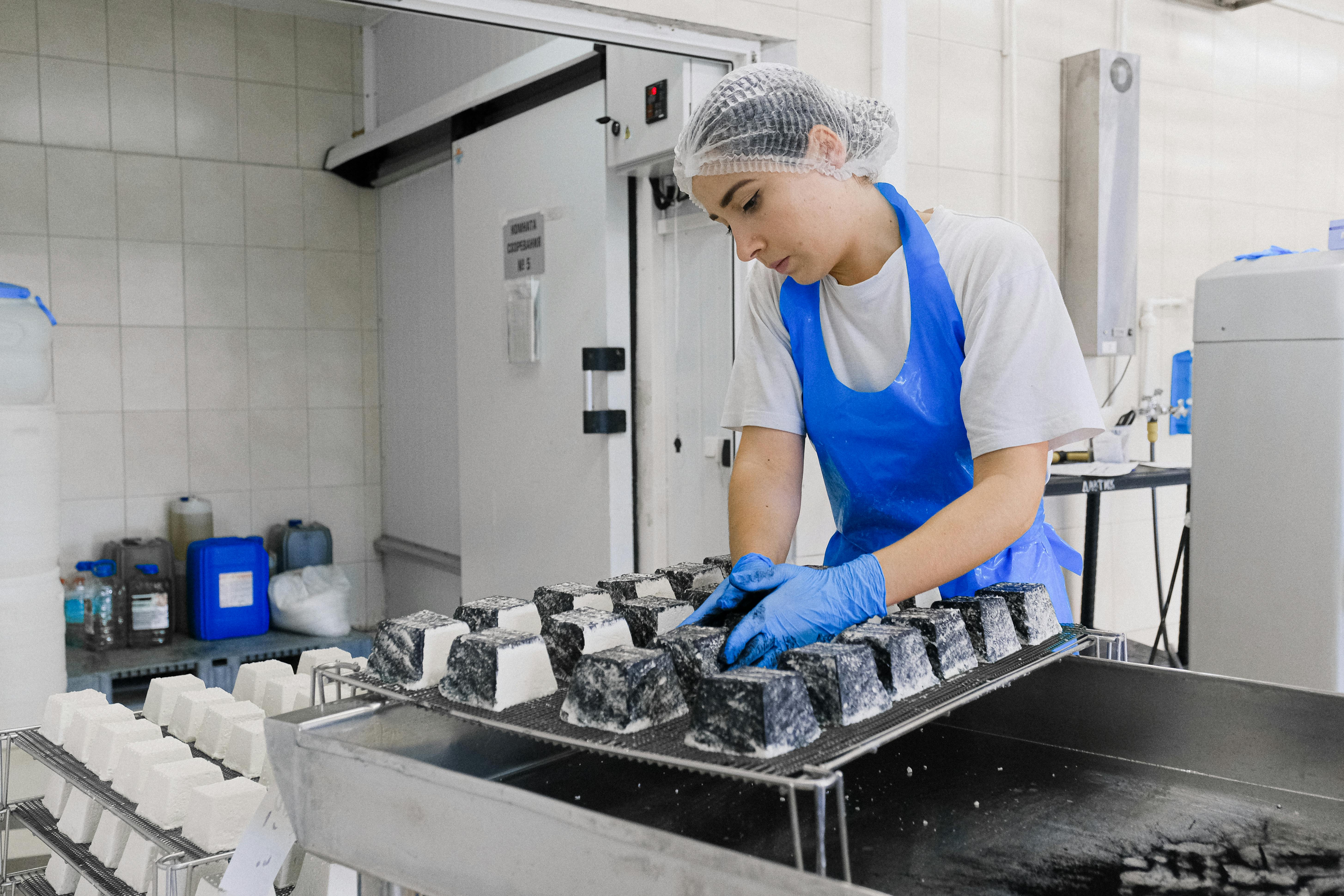
News 2024.03.26
Glassdome and Solar Collective Partner to Help Companies Track, Report, and Improve Greenhouse Gas Emissions
Vancouver, Wash., and New York, N.Y.: Glassdome, a leading manufacturing operations and sustainability platform, and Solar Collective Energy Solutions, a solar energy services company, are pleased to announce a partnership that will bring together complementary offerings to help companies create a greener, more compliant future.
Both firms pride themselves on making complex projects simple. With this partnership, customers can seamlessly handle carbon measurement, analysis, compliance, and reduction. For example, Glassdome was recently able to show a US stainless steel exporter that they reduced their product carbon footprint by 7% using on-site solar.
Companies will be able to track and report their products’ carbon emissions on the Glassdome Product Carbon Footprint (PCF) platform, and take advantage of Solar Collective’s implementation expertise as part of their reduction plan.
Glassdome customers use its PCF consulting and software platform to capture, validate, and report carbon emissions across their supply chains. Glassdome PCF consultants also work with customers to identify areas in which they can improve. All together, it makes the hard work of sustainability simple for manufacturers.
Solar Collective specializes in delivering comprehensive clean energy solutions tailored for businesses and organizations aiming to transition to renewable energy with minimal initial investment and hassle-free administration. Recognizing the diverse financial needs of its clients, the company offers a variety of financing options designed to provide unparalleled flexibility and accessibility.
Glassdome co-founder Joshua Charnin-Aker commented, “Many of Glassdome’s customers want to put a carbon reduction plan in place, whether it's out of altruism or for compliance or tax advantages. Partnering with a firm like Solar Collective makes that much easier for them and helps us advance our shared vision of simpler sustainability.”
“We are thrilled to partner with a like-minded team and industry leader like Glassdome. This partnership will allow our respective firms to seamlessly provide manufacturers a comprehensive suite of emission reduction and clean energy services,” said Mike DellaGala, CEO of Solar Collective.
Both organizations are excited about the promise this partnership holds to make life easier and greener for shared customers.
About Glassdome: Glassdome is an industrial software company dedicated to making operations and sustainability clear and simple for manufacturers. The company was founded in the innovative heart of San Francisco in 2019. Roots in Silicon Valley and Korea connect a tech-savvy spirit with powerful industrial expertise. The Glassdome platform is uniquely positioned to serve manufacturers that want to improve efficiency and meet and exceed green regulation requirements, all in one platform.
About Solar Collective: Solar Collective plans, builds and finances clean energy projects. We partner with a variety of organizations within the manufacturing sector to identify and implement customized energy saving solutions. From custom design to informed implementation, we manage the entire clean energy adoption process. Through our comprehensive due diligence process and suite of financing strategies, Solar Collective eases the complexity and inaccessibility of the renewable energy transition.
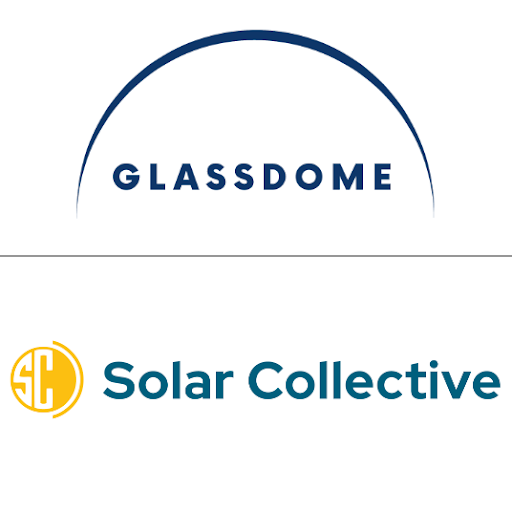
News 2024.03.25
Glassdome Completes the ISO 14067 International Standard Verification for Product Carbon Footprint Assessment from LRQA
• LRQA verified that Glassdome complies with ISO 14067, the international standard for calculating and reporting product carbon footprints (PCFs).
• Glassdome developed its PCF solution in accordance with the ISO 14067 standard from the outset. The Glassdome solution streamlines third-party verification, saving time and money.
• EU CBAM regulation will require third-party verification by an accredited institution for carbon emissions reporting. From 2026, verification will be mandatory to export items like steel and aluminum to the EU.
LRQA is an internationally accredited certification body and is recognized by the EU as an EU Emissions Trading System verifier. It also plans to be registered as one of the first accredited verifiers for the EU Carbon Border Adjustment Mechanism (CBAM). LRQA reviews CBAM reports, which are required to export items such as steel and aluminum to the EU, and assesses compliance with international standards. The company currently conducts international standard certification and verification in more than 160 countries.
ISO 14067 is the most prestigious international standard for PCF. It is based on the ISO 14040 and ISO 14044 standards for LCA (Life Cycle Assessment), which define the methodology for calculating and reporting carbon footprints. ISO 14067 verification means that the product carbon footprint, (carbon emitted throughout the entire lifecycle of a product) is measured and reported in compliance with the principles, requirements, and guidelines demanded by the international community.
Glassdome developed its product carbon footprint solution in accordance with ISO 14067 standards from the outset. This verification recognizes that both the method of calculating the product carbon footprint and the reports by the Glassdome solution are up to the highest international standards.
This proactive response to global environmental regulations like EU CBAM and the Digital Battery Passport means Glassdome customers will enjoy a far simpler third-party CBAM verification process. Carbon emissions measured and reported through Glassdome will automatically be ISO 14067 compliant, cutting time, cost, and red tape.
EU CBAM mandates that exporters of products like steel and aluminum to the EU must report carbon emissions produced during the manufacturing process to properly price their carbon tax. In the current transition period, measuring and reporting emissions will be required by 2025. Once CBAM is fully implemented in 2026, third-party verification of those reports by accredited bodies will be required.
Third-party verification can vary widely in time from three weeks to three months, and costs can be considerable. That makes a streamlined all-in-one solution like Glassdome an appealing solution for manufacturers.
Glassdome technology helps customers use real data to manage the life cycle of their products’ carbon footprints. Its all-in-one PCF solution supports the entire process from manufacturing data collection to monitoring and reporting, enabling compliance with environmental regulations.
Many competitors use default data from publicly available databases. Glassdome uses accurate measured data, significantly decreasing the risk of default values inflating carbon emissions and resulting in penalties or failure to get reports certified. To protect the sensitive information of manufacturing partners, the Glassdome platform analyses collected data in real time, converts it into carbon emissions values, and only transmits that data.
Lee Il-Hyung, Head of LRQA Korea, stated, "In an era when managing a company's carbon emissions for ESG management is an unstoppable global trend, Glassdome is leading the market by quickly introducing a product carbon footprint solution. Acquiring this ISO international standard verification will serve as an opportunity to internally and externally promote its technological competitiveness."
Simon Kim, CEO of Glassdome, added, "The Glassdome product carbon footprint solution significantly reduces the time and cost of the third-party verification required to export to the EU. We support companies exporting to Europe by providing accurate global carbon emission calculations and fast and reliable third-party verification, helping them secure and maintain a competitive edge in sustainability."
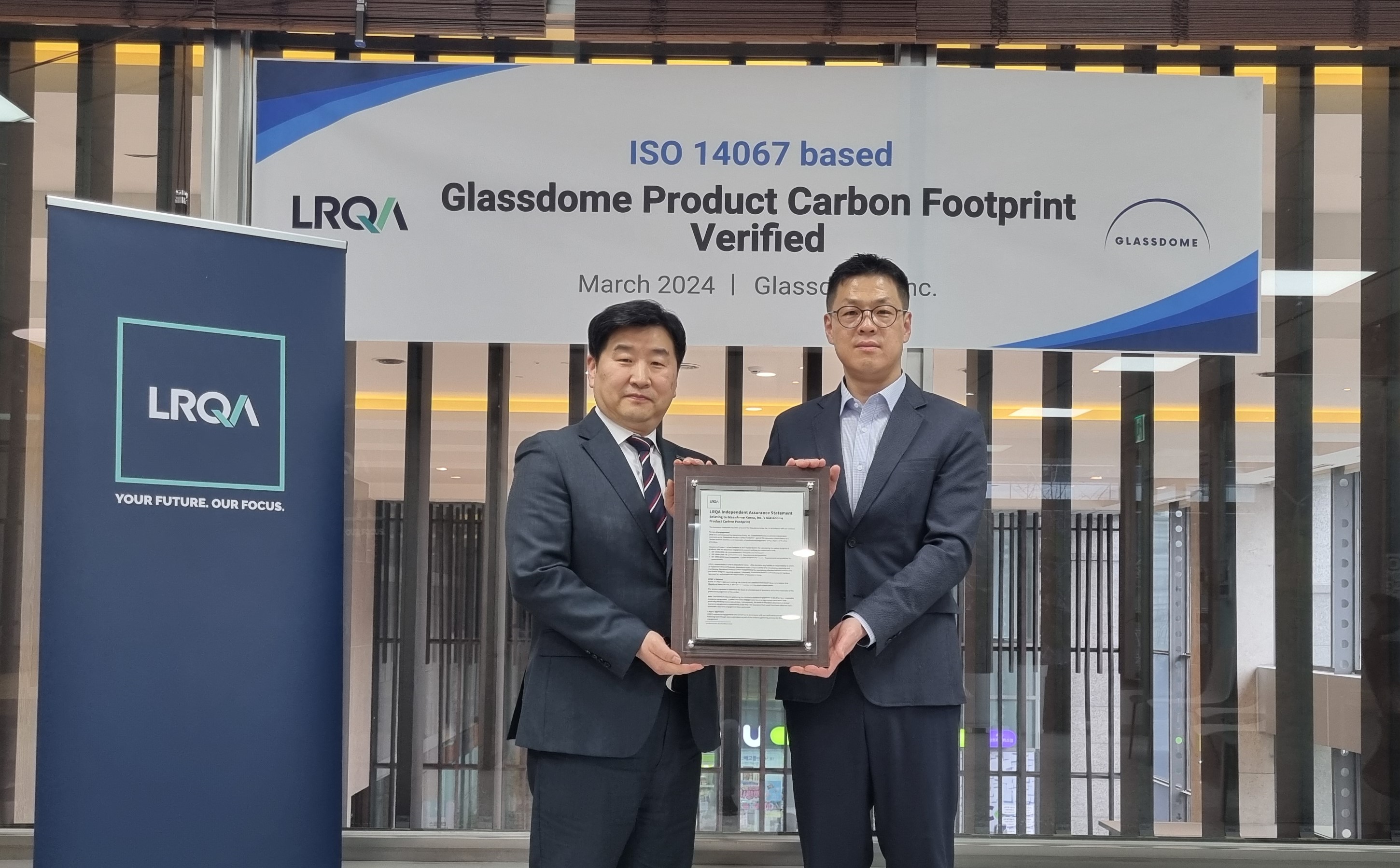
PCF 2024.03.19
What do new EU regulations mean for battery manufacturers and importers?
The European Union (EU) Battery Regulation 2023/1542 is key to the EU’s efforts to address environmental concerns, promote sustainability, and enhance energy security. Enacted on January 1, 2023 and planned to be implemented in Q2 2024, this regulation covers the entire battery lifecycle. It sets out ambitious targets and requirements from production to disposal to mitigate the environmental impact of batteries and foster the development of a circular economy. If you import batteries to the EU, you need to know its ins and outs.
Background
This new regulation replaces the Battery Directive (2006/66/EC), and will come into effect 12 months after the act passes. In the next few years more and more new requirements will come into effect that will directly impact battery manufacturers and their supply chain.
The driving force behind the new regulation is the 2019 announcement of the European Green Deal, a growth strategy that targets zero net greenhouse gas emissions by 2050. The end goal is to decouple economic growth from resource use and ensure that products marketed and sold in the EU are sourced and manufactured in a sustainable way.
The critical role batteries play in the overall green transition, from transportation to energy storage to digital transformation, makes them a key target of regulators. Although batteries are a cornerstone of sustainable development, their product lifecycle has not always been particularly clean.
Overview
The EU Battery Regulation is designed to promote the circular economy: encouraging the reuse, recycling, and recovery of battery materials. It establishes stringent requirements for the collection, treatment, and recycling of batteries. Manufacturers are required to design batteries with recyclability in mind, ensuring that they can be easily disassembled and their components recovered. Additionally, the regulation sets recycling targets for different types of batteries, incentivizing manufacturers to invest in recycling infrastructure and technologies.
The regulation addresses the environmental and social impact of battery production by imposing strict sustainability criteria on battery manufacturers. Manufacturers need to comply with environmental and social standards throughout their supply chains. By promoting sustainable sourcing and ensuring supply chain transparency, regulators aim to reduce the environmental footprint of battery production and mitigate human rights abuses associated with mineral extraction.
Beyond sustainability goals, the EU Battery Regulation aims to enhance the safety and performance of batteries. Faulty or improperly designed batteries are a consumer risk. The regulation establishes standards for battery safety and performance, including requirements for labeling, testing, and certification.
Finally, the EU Battery Regulation addresses the issue of battery waste management by establishing a comprehensive framework for the collection, treatment, and disposal of batteries. Manufacturers will assume responsibility for collecting and recycling of batteries, either individually or through collective schemes. Additionally, the regulation encourages the development of innovative recycling technologies and processes to maximize the recovery of valuable materials from spent batteries.
Specific Requirements and Timeline

*This timeline is subject to change based on when (or whether) the implementing act passes.
CE Conformity Assessment
To be traded freely in the EU, most goods need a “CE” (conformité européenne) mark. The mark affirms that goods are compliant with EU regulations.
The new regulation makes batteries one of these CE goods. All batteries, whether in a product or sold standalone, will need the mark.
In most cases the battery manufacturer needs to handle the CE conformity assessment. Different types of batteries have different requirements. The five categories are:
- Portable batteries
- Light means of transport (LMT) batteries
- Starting, lighting, and ignition (SLI) batteries
- Industrial batteries
- Electric vehicle batteries
Manufacturers can self-certify small portable and industrial batteries (under 2 kWh). For all other batteries, a separate certification body will need to be involved.
The CE conformity assessment and marking requirements will start to apply on August 18th, 2024. Related carbon footprint and recycled content requirements will be added at a later date.
Those requirements will be:
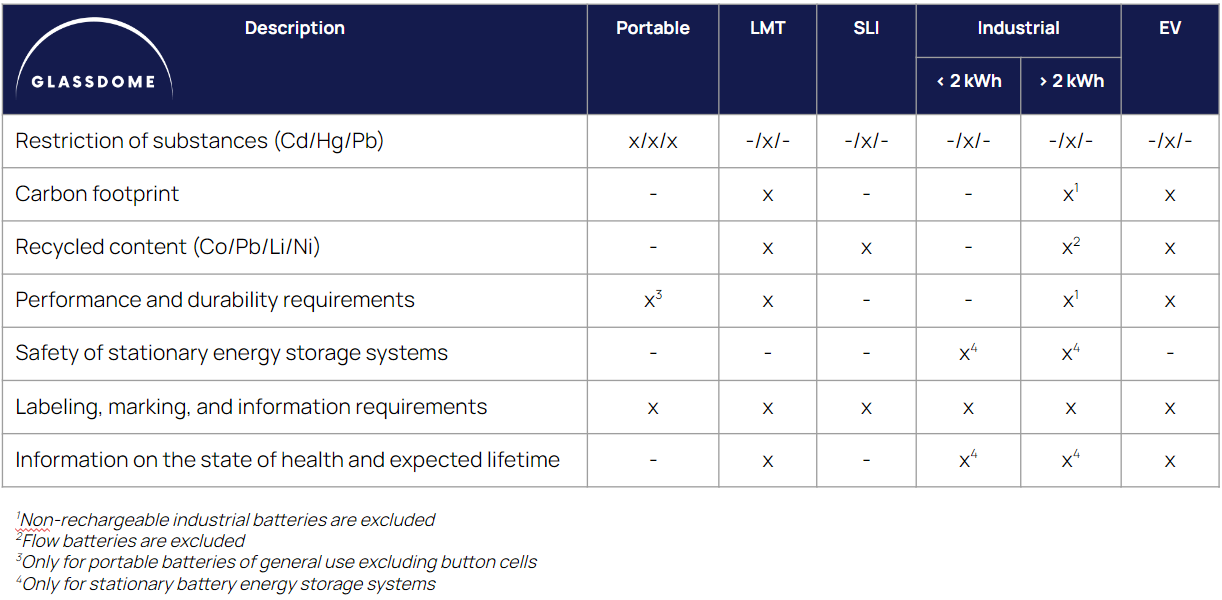
You’ll notice that carbon footprint calculation is a major component of the new regulation for EV, LMT, and certain industrial batteries. The EU has mandated six requirements for battery Carbon Footprints.
Each category of battery has its own carbon footprint timeline, moving from initial carbon footprint declarations to performance class declarations, to carbon footprint threshold beginning to apply. EV and LMT battery manufacturers should take note that the footprint calculations and performance class declarations will need to be conducted before the passport is required.
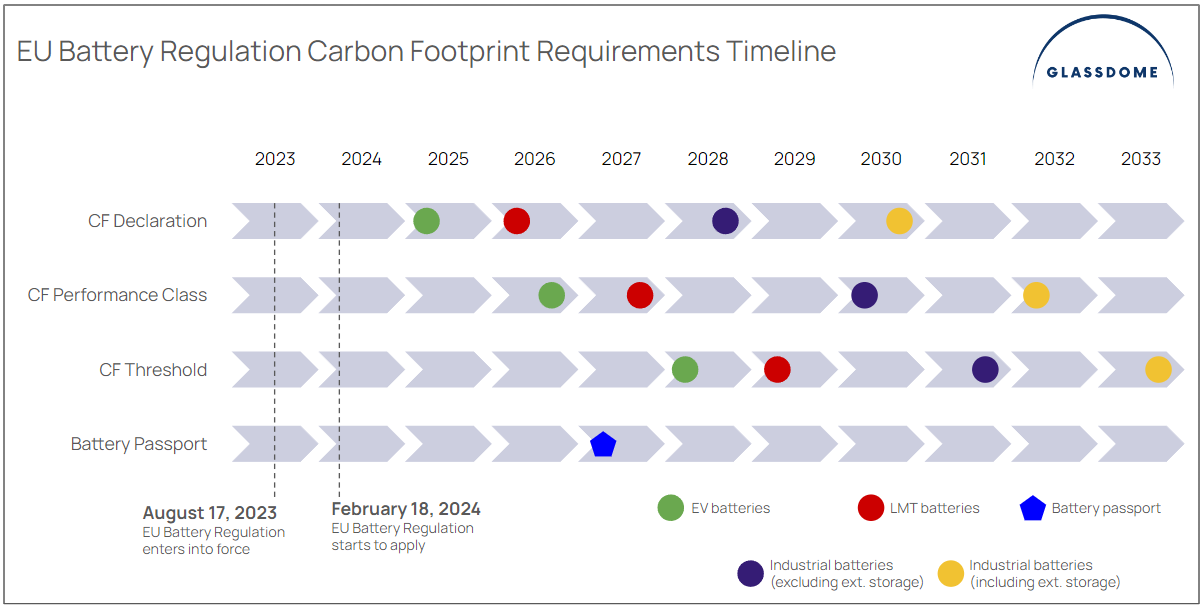
*This timeline is subject to change based on when (or whether) the implementing act passes.
Supply chain due diligence
Companies will be required to complete supply chain due diligence for batteries that contain cobalt, natural graphite, lithium, or nickel. Companies with a net turnover of less than €40mm that aren’t part of a larger corporate group are exempt.
To complete supply chain due diligence, companies must:
- Adopt and communicate a due diligence policy
- Establish strong supporting management systems
- Identify and assess upstream supply chain risks
- Design and put in place a policy to respond to those risks.
Third-party verification of these policies and their implementation will be required. Supply chain due diligence starts to apply on August 18th, 2025.
Extended producer responsibility and registration
The new regulation updates existing producer responsibility and registration requirements.
Extended producer responsibility means that companies that bring batteries to market in the EU are responsible for their end-of-life collection and treatment. The updates introduce new targets for collection rates and recycling efficiency.
The extended producer responsibility and registration requirements will also begin to apply on August 18th, 2025.
Replaceability of batteries
New requirements obligate electronics producers to make sure that portable batteries are easy to remove and replace by the end user. LMT batteries and cells in those batteries are required to be easy to remove and replace by independent professionals.
These battery replaceability requirements will begin to apply on February 18th, 2027.
Battery passport
One of the most complex pieces of new regulation is a requirement for an individual electronic battery passport for several types of batteries. These include:
- Industrial batteries over 2 kWh
- EV batteries
- LMT batteries
The battery passport will include general information about the battery and a product and sustainability data sheet.
The goal of the battery passport initiative is to strengthen supply chain transparency and quicken information exchange across each battery sample. The passport will be available through a QR code on each battery.
The battery passport requirement begins February 18th, 2027.
Glassdome is already working with our partners at the Global Battery Alliance to help some of the world’s leading battery manufacturers get ready for the battery passport era.
Material recovery rates
The final piece of the regulatory puzzle to come into effect are targets for material recovery of cobalt, copper, lead, lithium, and nickel in battery recycling and treatment facilities.
These targets will start to apply starting December 31st, 2027.
Looking ahead
The EU Battery Regulation 2023/1542 represents a significant step forward in the EU's efforts to promote sustainability, enhance energy security, and address environmental challenges. It sets a precedent for global efforts to promote sustainable battery production and consumption, paving the way for a more environmentally friendly and socially responsible future.
Need help getting ready for this new era of regulation? Glassdome can help. We’re already working with some of the world’s largest battery producers and their suppliers to build a strong compliance and reduction foundation. Drop us a line on our site, or email us at [email protected]. You’ll be glad you did.
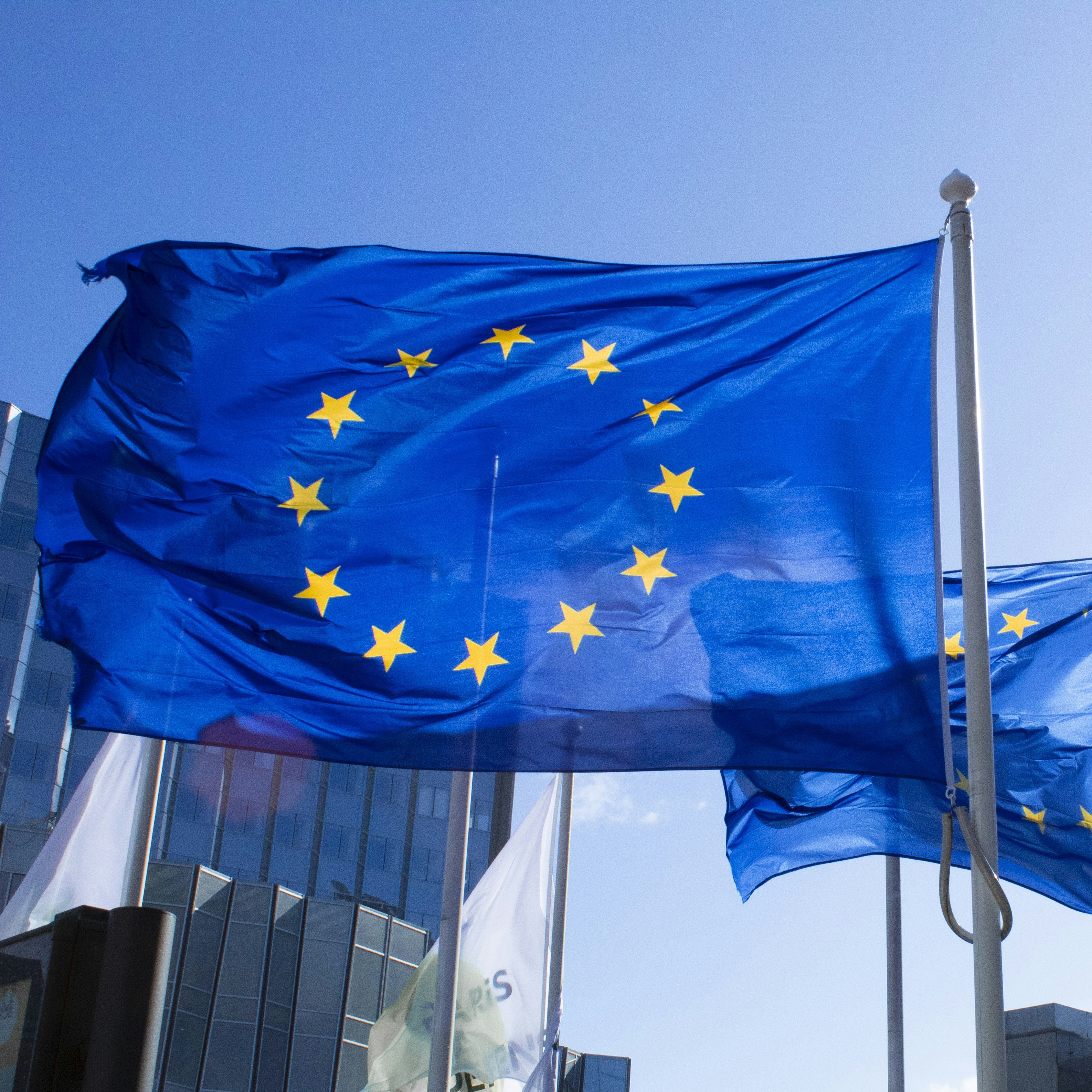
News 2024.02.05
Glassdome, together with SK C&C, establishes a Digital Carbon Passport platform based on Life Cycle Assessment (LCA) at Lotte Aluminium and Choil Aluminum.
- Glassdome helps manufacturing companies respond to global environmental regulations with digital transformation and product carbon footprint (PCF) solutions
- Lotte Aluminium and Choil Aluminum have an LCA-based total carbon emissions management system that goes beyond EU CBAM compliance
- Korea’s first application of a ‘Carbon Emissions Management Platform’ that simultaneously supports EU CBAM and battery regulation compliance
- Platform enables calculation of raw material supplier carbon emissions (Scope 3) and creates product-level carbon footprint management system
Seoul, South Korea (Feb 5, 2024) - Glassdome, a company specializing in carbon emissions data management solutions, has partnered with SK C&C (CEO Yoon Poong-young) to develop the "Digital Carbon Passport platform" for Lotte Aluminium Co., Ltd., (CEO Choi Yeon-soo) and Choil Aluminum Co., Ltd., (CEOs Lee Young-ho and Seong Won-mo). This significant collaboration was announced on February 5th.
This project is a proactive response to new climate change and greenhouse gas reduction regulations, particularly those in the European Union (EU) and the United States. It is specifically designed to address the EU Carbon Border Adjustment Mechanism (CBAM) and create a competitive edge in carbon emissions compliance.
The Digital Carbon Passport initiative aims to establish a robust platform rooted in Life Cycle Assessment (LCA) methodology, meticulously assessing the entire carbon footprint throughout a product's lifecycle. It is also a preemptive measure designed to align with new EU battery regulations set to take effect in February 2025.
This is a groundbreaking achievement within South Korea, as the first-ever deployment of a carbon emissions management platform designed to seamlessly ensure compliance with both the EU Carbon Border Adjustment Mechanism (CBAM) and battery regulations.
Lotte Aluminium is a materials company specializing in the production of aluminum foil tailored to meet the capacity and voltage requirements of secondary batteries. Choil Aluminum is a supplier of the raw materials essential for the production of aluminum foil for Lotte Aluminium. These two companies are part of the global secondary battery supply chain and are subject to EU CBAM and EU battery regulations.
The Digital Carbon Passport platform introduced to Lotte Aluminium and Choil Aluminum is designed to gather and analyze all carbon emissions data. Many carbon footprint initiatives only cover Scope 1 and 2, which include direct and indirect emissions originating from product production processes. The Digital Carbon Passport includes Scope 3, which encompasses emissions stemming from raw material suppliers.
As a result, both companies have achieved a groundbreaking industry milestone by establishing a comprehensive product-level carbon footprint management system.
The Digital Carbon Passport platform adheres to the ISO 14067 international standard and serves as a tool to streamline the compulsory reporting of carbon emissions in accordance with the European Union's Carbon Border Adjustment Mechanism (CBAM). CBAM imposes tariffs on carbon emissions associated with six major product categories, such as steel and aluminum. It goes beyond merely accounting for carbon emissions generated during the production process; it also supports comprehensive life cycle assessments, quantifying and evaluating the environmental impact throughout the entire product life cycle.
Glassdome has the world's first technology to manage the carbon footprint life cycle of products based on primary data. Distinguishing itself from alternative solutions in the market, which often rely on users manually inputting carbon emissions data based on default or average values from public sources, Glassdome's approach utilizes real data. This methodology significantly reduces the risk of potential overestimation of carbon emissions, which could result in penalties or uncertified reports. Glassdome uses a real-time data collection and analysis approach to safeguard the confidentiality of sensitive information. This process efficiently converts the data into carbon emissions metrics and transmits only this processed information, ensuring both accuracy and security.
Seungmin Lee, the Head of the ESG Strategy Division at Lotte Aluminium, said, "We have entered into this agreement with a proactive commitment to comply with the carbon-related regulations set forth by the EU. With the implementation of this contract, we have successfully obtained precise and trustworthy carbon emissions data, gathered in real-time from every stage of our processes. I am eager to embrace this opportunity as it paves the way for us to not only reduce our carbon footprint but also enhance our competitiveness by introducing eco-friendly technologies."
Seong-hoon Jeong, Head of the R&D Center at Choil Aluminum, expressed, "Through this contract, we have acquired a robust carbon emission management platform, aligning perfectly with the carbon neutralization requirements of our secondary battery customers, who are investing in the EU and US markets." He further emphasized, "By effectively addressing key global carbon neutralization initiatives, including the Carbon Border Adjustment System (CBAM) and Life Cycle Assessment (LCA), we have solidified our position as an environmentally-conscious battery materials company. We are also fully prepared to comply with additional carbon management regulations such as PCF (Carbon Footprint) and DBP (Digital Battery Passport), reinforcing our commitment to sustainability."
Jinki Ham, Head of Glassdome Korea, emphasized, "A substantial portion, ranging from 60% to 90%, of product carbon emissions falls within the Scope 3 category. Accurate carbon emissions data from our manufacturing partners is crucial for an exact evaluation of the entire supply chain's carbon footprint and for formulating effective long-term carbon reduction strategies." He continued, "We've established a comprehensive framework for the systematic collection and management of carbon emissions data from the partner suppliers of Lotte Aluminium such as Choil Aluminum. We will commit to collaborating closely to facilitate substantial carbon reductions within each company, setting the stage for sustainable business operations."

PCF 2024.01.16
What’s the Difference Between the GHG Protocol and CBAM?
ESG regulation never stops evolving, and the Greenhouse Gas (GHG) Protocol and Carbon Border Adjustment Mechanism (CBAM) are no different. Companies aren’t sure how to navigate and implement new regulations and standardized frameworks.
One of the most common question we hear is this: If your company is already following the GHG Protocol framework, do you comply with CBAM?
Overview
The GHG Protocol and CBAM (pronounced see-BAM) are closely linked, but they serve different purposes and address distinct climate action challenges.
The GHG Protocol is a voluntary tool that organizations can use to measure and manage their emissions. CBAM is a European Union regulation (part of The European Green Deal) designed to address carbon leakage and ensure fair competition in the international trade of goods. Figure 1 is a overview of the key differences between the GHG Protocol and CBAM:
Figure 1. Differences between the GHG Protocol and CBAM.
The GHG Protocol is voluntary, developed by non-profit organizations, considers Scope 1, 2, and 3, and covers a broad spectrum of emissions. CBAM is mandatory for several types of importers to the EU, developed by the EU, does not consider all of scope 1, 2, and 3, and is aimed solely at carbon leakage. They both apply to business, focus on greenhouse gas accounting and emission measurement and reporting, and are the result of international collaboration.
The key overall difference between the two methodologies is that CBAM is not focused on determining GHG emissions at the corporate level, but rather at the product level.
So while the GHG Protocol and CBAM share commonalities in their application to businesses, their focal points diverge.
Before we dive into details, let's look at how the transitional phase of CBAM works. If you want to navigate the regulations and stay compliant, you need to understand the workflows and governance system.
Today, CBAM only applies to a specific set of goods imported into the EU: cement, iron and steel, fertilizer, aluminum, electricity, and hydrogen.
Figure 2 illustrates the transitional phase of CBAM.
Figure 2. The Governance System and Workflows Included Under the Transitional Phase of CBAM.
- The importer gets CBAM goods from global installations outside the EU.
- Customs declare each import in the usual process.
- Customs authority informs the EU Commission via CBAM Transitional Registry of the import. This serves to verify the thoroughness and precision of quarterly CBAM reports.
- Reporting declarant requests embedded emissions data from CBAM goods' operators.
- Declarant submits quarterly CBAM report to CBAM Transitional Registry.
- The Commission exchanges information with EU authorities and determines which reporting declarants need to submit CBAM reports. The Commission also performs spot checks and addresses irregularities within the reports.
- The importer, if penalized, informs the operator to prevent future issues.
Got it? Let's get started on the differences between the GHG Protocol and CBAM.
Already thinking you might need to look at software that’ll help you through data collection and reporting? We’ve got you covered.
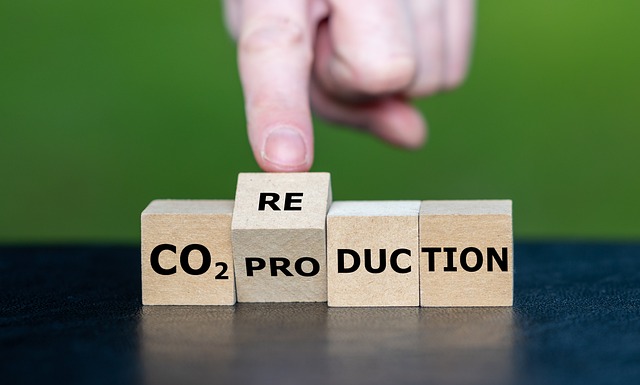
Mfg 2024.01.15
Why Does Manufacturing Need to Change?
Manufacturers are at an inflection point. Making things and getting them to where they need to be is far more complex than it once was. While manufacturing moves from developed countries to new frontiers, supply chains grow more and more volatile. How can modern manufacturers understand and adapt to these changes?
What’s happening to manufacturing in developed countries?
Since the late-20th century, manufacturing's share of worldwide value creation has been decreasing. According to the World Bank and OECD, the global share of manufacturing in GDP has decreased from 18.9% in 1997 to 16.6% in 2021 (see chart).
This decline in manufacturing’s importance to the global economy began in leading developed countries. Deindustrialization has been clearly evident in the United States, Europe, and Japan for some time. Recently, it has also been observed in the Four Asian Tigers – South Korea, Singapore, Hong Kong, Taiwan – as well as in China.
In the United States, manufacturing decreased from 16.1% in 1997 to 10.7% of GDP in 2021. In South Korea it decreased from 27.6% in 1988 to 25.5% in 2021. Manufacturing’s share of GDP is falling even in major manufacturing nations like Germany, Japan, and China.
Are developed countries just “hollowing out?”
In addition to deindustrialization, much of this decline in developed countries can be attributed to offshoring, leading to a phenomenon called "hollowing out." This is when manufacturing facilities move to countries with lower labor costs, resulting in a decline in the manufacturing workforce in the original country. In a social context, it can be dangerous as middle-class jobs disappear, wealth concentration increases among the affluent, and the low-income population grows.
This isn’t a case of self-centered manufacturers looking for marginal gains on their balance sheet. The IMF notes that this decline in the manufacturing share of the overall economy is considered a natural occurrence as the entire economy develops. The fact that consumption expenditures on manufactured goods have remained relatively stable over the past few decades supports this argument.
However, despite these factors, it is undeniable that the traditional manufacturing-centric industrial structure is undergoing a revamp, and manufacturing’s share of the developed world’s economy is decreasing.
Supply chain challenges
The global supply chain has become historically volatile. The Global Supply Chain Pressure Index (GSCPI), which measures the status of the global supply chain by integrating transportation cost data and other manufacturing-related indices, has fluctuated wildly in recent years. This instability is due to trade tensions between the U.S. and China, a worldwide spike in protectionism, and, of course, the COVID-19 pandemic.
Global Supply Chain Pressure Index
How can the manufacturing industry strengthen its competitiveness to overcome these challenges?
Deindustrialization and global supply chain volatility are challenging the manufacturing industry. Without a system that can adapt flexibly to these shifts, the sector may face even greater crises.
That’s why Digital Transformation is the hottest topic in manufacturing innovation.
Digital Transformation (DX) refers to the process of introducing and operating digital technologies to develop new products and innovate existing products or operations. This includes cutting-edge tech like the Internet of Things (IoT), cloud computing, Artificial Intelligence (AI), and big data solutions. Digital Transformation is designed to improve efficiency and customer experiences and create additional value through innovation and new inventions.
The COVID-19 pandemic acted as a catalyst for Digital Transformation. A survey in 2020 showed that 37% of European companies and 27% of U.S. companies had not adopted digital technologies, but in 2021, 55% of European companies felt the need to adopt digital technologies due to the pandemic, and over 46% increased their investments in digital technologies.
Manufacturers have their own subset of DX: Industrial Digital Transformation (iDX). iDX is the process of addressing industrial challenges and creating new value by integrating digital technologies such as cloud computing, big data analysis, AI, and 5G throughout the entire industrial process.
iDX can be broadly organized into four categories: process innovation, product intellectualization, service enhancement, and the creation of new industries and business models.
The future
Despite its promise, Digital Transformation is not progressing as rapidly as expected. While almost all companies have started DX projects in some form or at some level, most are struggling to fully complete the initiative and embed Digital Transformation in their DNA.
Companies and governments worldwide are implementing various policies to promote the Digital Transformation of industries. In future insights, we’ll explore the DX promotion policies of different countries and regions.
Looking to implement iDX in your factory to make it more efficient and increase visibility and productivity? Look no further. Our Manufacturing Operations platform is the best way to cut downtime and raise quality.
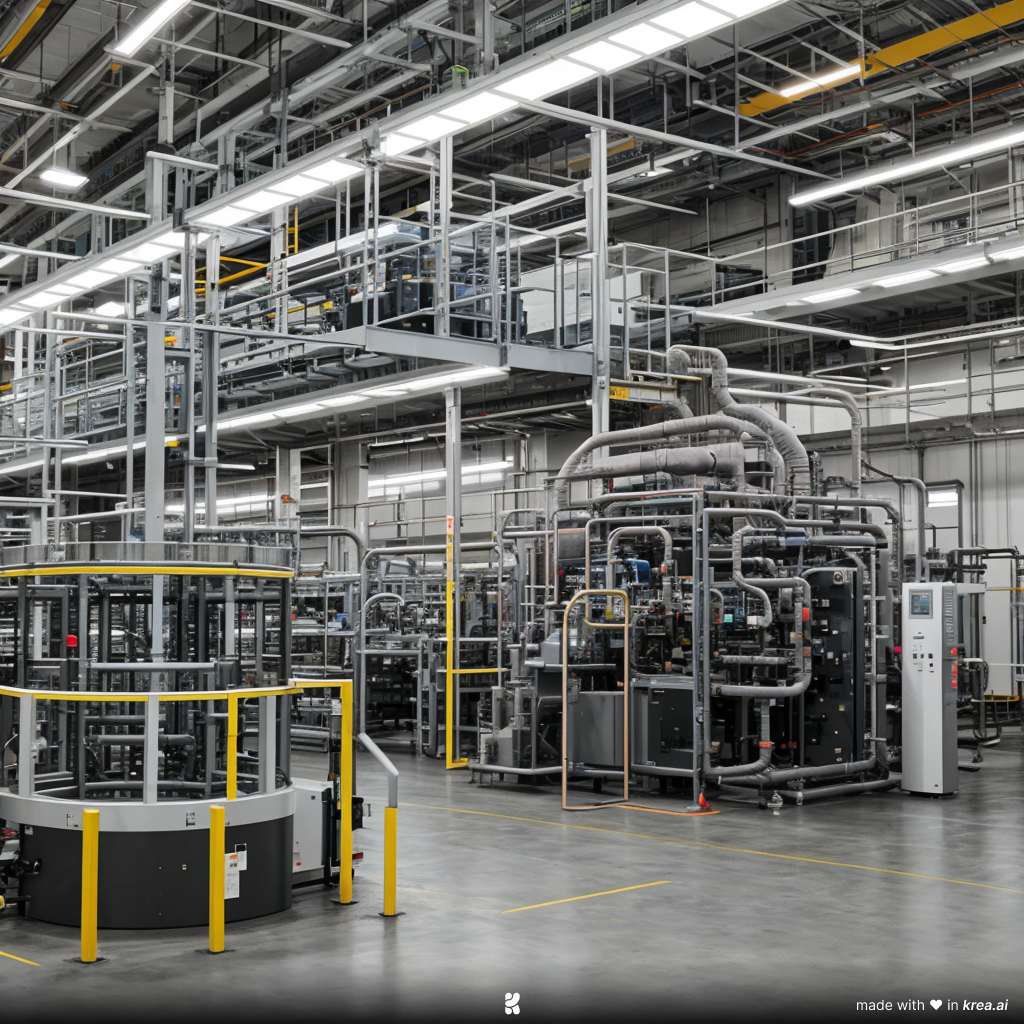
Subscribe
Enter your email address to subscribe to the Glassdome Sustainable Manufacturing Blog
This site is protected by reCAPTCHA and the Google
Privacy Policy and
Terms of Service apply.



